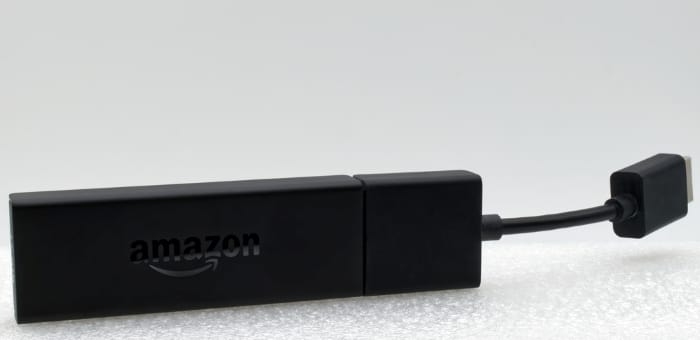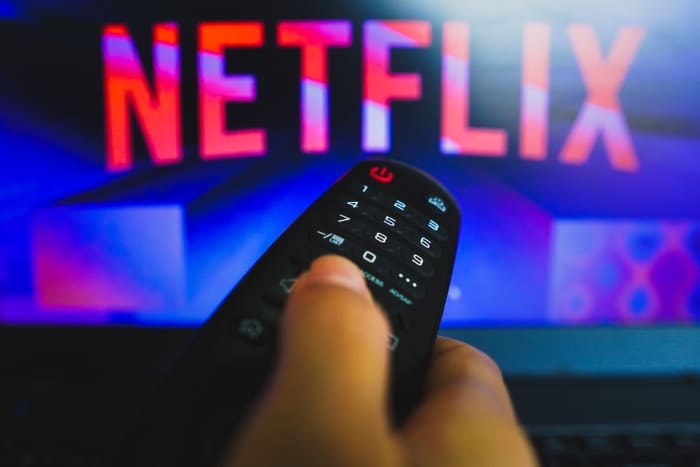We've independently reviewed this article to make sure it's as accurate as we can make it.
To find out more about our article creation and review process, check out our editorial guidelines.
Are you stuck trying to watch HDR content, but your TV keeps turning it off?
It’s quite a common problem! In fact, faulty HDR features affect thousands of TV owners daily, leaving them watching plain old SDR (Standard Dynamic Range) content.
Having a feature as useful as HDR fail can be very annoying – especially when you’ve already prepared popcorn or a nice homemade meal to eat while watching your favorite shows.
But don’t worry; you’ve come to the right place for answers. Below, you’ll find a list including 4 tips to help when your TV is on the fritz.
When you can’t watch HDR without it turning off, it’s likely due to a communication issue between your source device and TV, a faulty HDMI cable, or a fault in your favorite streaming platform. Sometimes, a fault with the TV itself can also be to blame.
Ready to get back to steady HDR content? Let’s go!
Why trust us? This article was written by Craig Anderson and Austin Sharman.
Craig has helped thousands of other homeowners repair their appliances since 2016.
Why Your HDR Keeps Turning Off
While there’s no single cause for when you can’t watch HDR content without it turning off, there are typically some common culprits that can explain the issue.
Faulty HDR features can often be caused by something simple, like a faulty or incorrect HDMI cable, or something more complex, like a bad TV panel. To help you get to the source of the issue, here are some things I recommend you check first.
#1 Check Your External Sources
The first thing I recommend you look at when you can’t watch HDR without it turning off is that all your external sources are working normally.
While many modern SmartTVs have great operating systems, a wide variety of streaming apps, and quick navigation, sometimes people prefer to stream their favorite content via an external device, such as a gaming console or an Amazon Firestick.

If you’re one of those people and have noticed HDR issues, there’s a good chance your external streaming device is to blame.
Your external streaming device might be giving you trouble due to a bug or glitch, using the wrong settings, or even accidentally disabling its HDR capabilities.
Solution: In my experience, the best way to tell whether an external source is to blame for bad HDR performance is to isolate it.
- Try unplugging the external source from your TV (removing the HDMI cable from your TV’s port will do).
- While ensuring HDR is enabled on your TV, open any streaming platform and start streaming content that offers HDR.
- If the feature works normally, you have confirmation that your external streaming source is to blame for the problem.
It’s critical that you ensure HDR is enabled on your TV settings and that you pick content that offers High Dynamic Range, as otherwise, diagnosing a fault will be impossible. If you’re unsure how to check HDR in your TV settings, please refer to your User Manual for instructions for your specific TV model.
Please refer to our free resource below to find your User Manual online if you don’t have it handy.
#2 Check Your HDMI Cable
Once you’ve either confirmed or ruled out an external streaming source as the root of the issue, it’s also essential to check your HDMI cable to determine why you can’t watch HDR without it turning off.
Depending on how well-versed you are in terms of technology and cable ratings, you might know that HDMI cables have different versions and data transfer capabilities.
The newer the HDMI version (currently version HDMI 2.1), the higher its data transfer speed and the higher the resolution and refresh rates it can handle.
Since HDR is packed with so much contrast, it weighs a ton – especially when paired with 4K resolutions and higher refresh rates (120 Hz). If your HDMI cable is not certified to handle HDR at your desired resolution and refresh rate, it can explain why the feature keeps turning off or not working.
Solution: My usual advice in such cases is to ensure your HDMI cable is rated for HDR at your desired settings. Most HDMI cables don’t have the version written on them, but if you still have the box, it should be written there.
If you determine the cable does not meet your needs, you’ll have to buy a new one that does. Original HDMI 2.1-certified cables aren’t cheap ($3-$8 per ft.), but if HDR content matters to you, it’ll be a good investment.
In the event that your HDMI cable is rated to handle HDR at your desired resolutions and refresh rates, then it’s likely that damage to the cable is what’s causing the problem. Try using the cable with other TVs and streaming devices and see if the issue persists.
If so, replacing the cable will get everything back to normal.
#3 Check Your Streaming Platforms
When you can’t watch HDR without it turning off, there’s also the possibility that your favorite streaming services are to blame.

Sometimes, when HDR is failing, the issue can come from a bug or server failure on a streaming platform’s end that’s affecting performance and features. The situation is rare, especially because such platforms handle HDR internally rather than relying on your TV’s performance capabilities.
From what I’ve seen, even when a streaming platform’s servers fail, HDR will keep working normally in most cases, so I’d only consider this possibility in extreme scenarios.
#4 Check Your TV
Last, let’s consider your TV as the source of the problem when you can’t watch HDR without it turning off.
In most cases, when you’re experiencing HDR issues, the more likely culprits will always be external factors, such as a faulty or outdated HDMI cable or an improperly configured external device – especially because modern TVs are built under strict quality standards.
However, even then, certain factors, such as bugs, glitches, crashed background processes, and factory defects can occasionally appear and cause problems with your TV. More often than not, you can resolve most of the issues yourself, but it’ll come at a cost.
Solution: To get to the bottom of the issue, you’ll need to try 3 different things:
Power cycling: Sometimes, a simple reset might do the trick when you can’t watch HDR without it turning off. TVs execute thousands of background processes while you use them to watch your favorite shows. Occasionally, such processes can crash due to bugs, corrupted files, or glitches.
By unplugging your TV from the wall outlet, waiting a couple of minutes, and plugging it back in, you can refresh many of its background processes, which can prove beneficial.
Check known issues: Some TVs are incompatible with certain streaming apps and devices. Please check your manufacturer’s website or support forums to determine whether your TV has trouble working with any source.
Alternatively, you can contact your manufacturer’s customer support team and explain the problem. More often than not, they’ll be able to tell you if there’s a known issue with an external device or app you’re trying to use.
Factory Reset: If a simple reset doesn’t work and you’ve already checked for any incompatibility issues, my last recommendation is to try a factory reset to eliminate suspicious files.
Factory resetting should only be used as a last resort, as the process will restore your TV to its default settings. When performing the reset, you’ll lose any saved passwords and networks, picture calibration settings, installed apps, and any other change you’ve made to your TV since you brought it home.
My usual advice is to write down any passwords, user names, and installed apps before performing the reset to ensure you don’t miss anything when the TV comes back on.
If All Else Fails
Lower Your Streaming Resolution
Provided you haven’t been able to solve the problem and aren’t willing to spend money on a certified HDMI cable or a technician’s visit, you can always lower your content’s resolution.
If you’re having trouble getting HDR to work on 4K content, try lowering the resolution to something a bit lighter, such as Full HD (1080p). In most scenarios where the root of the problem is data transfer capability, network speed, or TV internal defects, lowering the resolution can help.
Bear in mind, though, that using lower resolutions won’t always be possible, as certain streaming platforms automatically set them for you.
Turn to Hardware Replacement
If you got all the way down here and are still having issues, an internal component is likely to blame for the situation.
I strongly advise against trying to repair one of your TV’s internal components yourself, as it can be very risky. TVs have capacitors, which, even when unplugged, can hold a dangerous electrical charge for months or even years.

If you determine you need to do repairs on your TV, please reach out to a professional for assistance. Certified TV technicians can often get discounts from vendors and manufacturers and may offer to lower their labor costs if they misdiagnose a problem.
Replacing certain components in your TV can cost between 30%-70% of the appliance’s original value, so you’ll have to be careful when deciding what to do. To put costs into perspective, replacing a TV’s mainboard (also known as a motherboard) can cost between $50-$250, depending on the TV.
Getting HDR to Work on Your TV
That about covers it!
When you can’t watch HDR without it turning off, owning the latest TV and the flagship model of a streaming device feels pointless.
However, I hope the information provided in this piece has helped you see that, in many cases, addressing the issues behind a faulty HDR feature doesn’t have to be a headache. More often than not, you’ll just have to go to the store to get the right HDMI cable.
Thanks for reading. If this article was helpful and answered your questions, please check out our other resources and free guides below and consider subscribing to our newsletter.
Have a great day!
-Craig.








